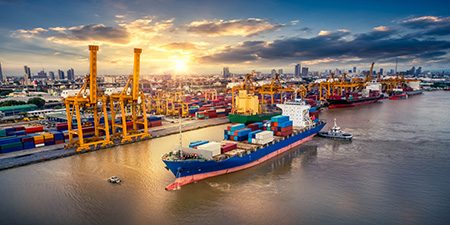On Friday, May 10, 2019, the Trump Administration increased the tariff rate on US$200 billion worth of annual U.S. imports of Chinese-origin products from the current rate of 10% to 25%. That sharp hike in U.S. tariffs reflects an apparent inability of the two countries to resolve their trade and investment differences despite months of intense high-level and mid-level negotiations, and despite previous relatively positive statements from both sides before this week. As noted below, the failure of the two sides to reach an agreement could mean that the 25% additional U.S. tariffs will persist for some indefinite period, and the White House has further signaled that it could impose even more such tariffs on additional goods from China.
Citing China’s “retreat from specific commitments agreed to in earlier rounds” of negotiations, the Office of the United States Trade Representative (“USTR”) has raised the import tariff on Chinese-origin goods that enter under hundreds of individual classification codes in the Harmonized Tariff Schedule of the United States (“HTSUS”). This escalation resumes a cycle of reciprocal tariff increases between the two countries that began last year but were paused at the end of 2018 to allow both sides to engage in negotiations. (For our earlier eUpdate on the pause in tariff increases, please see here.)
Between July and September 2018, the Trump Administration had imposed punitive tariffs against three lists of Chinese-origin goods under Section 301 of the 1974 Trade Act that collectively represent nearly one-half of all Chinese-origin goods imported into the United States. The third list (“List 3”), which went into effect in September 2018, is the largest of the three lists and is applicable to about US$ 200 billion in annual imports of Chinese-made goods. The tariff rate on these List 3 goods had been due to increase on January 1, 2019, to 25% from the current 10% rate, but the Administration had postponed that increase as part of a temporary truce as the two countries continued negotiations to resolve the multiple underlying disputes concerning Chinese economic and industrial policies.
The Administration’s goals for these negotiations had been to address China’s perceived lax intellectual property protections, non-tariff barriers, cyber intrusions, and discriminatory market access for U.S. goods and services, as well as impose enforcement mechanisms for the resulting agreement. Notwithstanding earlier positive statements by U.S. trade officials about these talks, this past week those same officials abruptly changed their tone concerning the negotiations, and USTR Robert Lighthizer stated that, from the U.S. perspective, there had been a disturbing “erosion of commitments.” This change prompted President Trump’s decision now to allow the List 3 tariff increase from 10% to 25% to take effect.
The USTR simultaneously announced that it will also consider applications for case-by-case exclusions from the newly increased 25% tariff under List 3. Until this week, the USTR had only been considering exclusions for items under the first two lists since the application deadlines ended late last year, but USTR had declined, up to now, to initiate any similar procedures for List 3 items. According to its notice about the List 3 tariff increase, USTR will be publishing deadlines and procedures to enable U.S. companies to seek exclusions for their List 3 imports from the new 25% tariff. Under the previous exclusion procedures for the first two lists, the USTR has considered whether it is possible to source the same or a comparable product from the United States or other countries besides China; whether the additional duties “would cause severe economic harm to the requestor”; whether the product is “strategically important or related to ‘Made in China 2025’ or other Chinese industrial programs”; the aggregate import value and quantity by the requestor of the item in the preceding three years; and whether the requestor uses the Chinese-origin item as an input in production or sells it as a final product. It seems likely that the USTR will assess List 3 exclusion applications using the same or at least comparable criteria.
The U.S. tariff increase going into effect on Friday covers only the List 3 items that had already been subject to 10% additional tariffs under Section 301 and does not include any other new items on the HTSUS. However, President Trump has stated that he is still considering whether to impose increased Section 301 tariffs “shortly” on all remaining imports from China, which could then include another US$325 billion worth of annual U.S. imports, if these negotiations do not lead to any final agreement. The timeline, scope and magnitude of such additional tariffs remain uncertain at this point and could involve another round of public hearings and comments as in the previous proceedings for the first three Section 301 lists announced in 2018.
Finally, U.S. companies that export into the Chinese market will face renewed uncertainty about China’s reactions to these U.S. tariff changes, including expansion of already announced retaliatory Chinese tariffs and altered Chinese buying patterns, particularly among industries that are heavily dominated by state-owned enterprises. Thus far, Chinese trade officials have chosen to speak temperately and only of China’s determination to take unspecified “necessary countermeasures,” but any U.S. policy move in these fraught relations is almost certain to produce a counter-move in retaliation by China. Unfortunately, no one can know at this point where or when such tit-for-tat tactics will end or how much economic pain and damage will have to be inflicted on individual companies, workers and farmers in both nations before the two governments can return to the bargaining table and find some mutually acceptable resolution of their profound differences about trade and investment.
Dorsey & Whitney trade attorneys are available to consult about the impact of these List 3 tariff increases, prudent mitigation measures and the preparation and filing of exclusion requests with the USTR when its deadlines and procedures for exclusion applications are publicly known.


